No Results Found
The page you requested could not be found. Try refining your search, or use the navigation above to locate the post.



Tahmidur Rahman, Senior Assoicate
31 October 2019
Find the subsections below, If you want to jump through specific sections instead of reading the whole article.
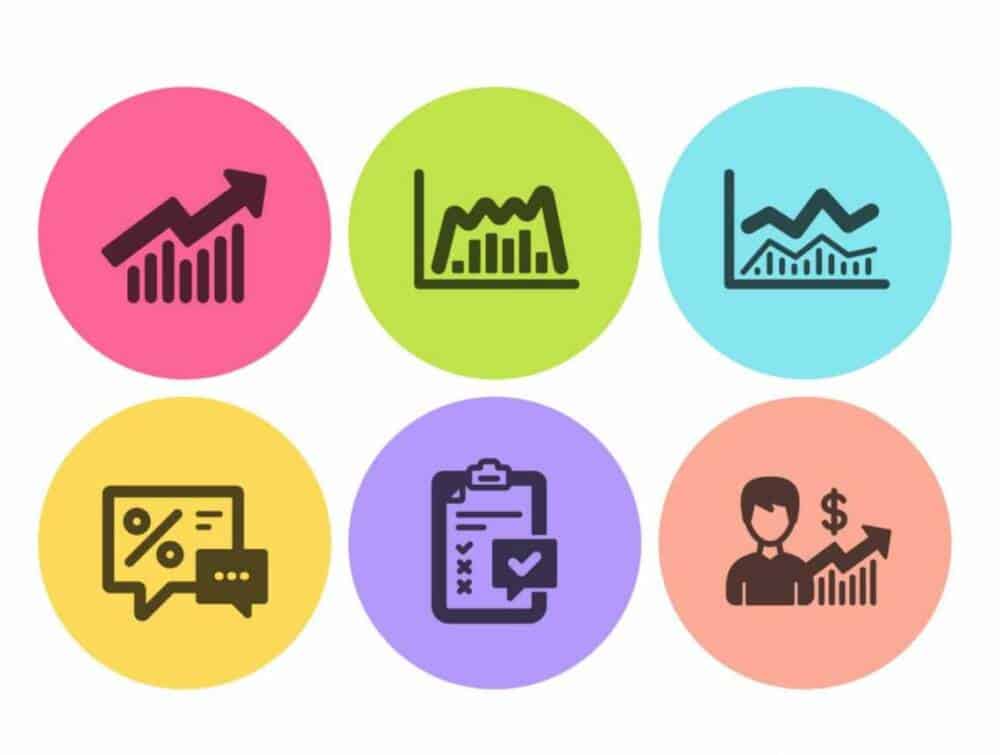
One of the important steps of starting business in Bangladesh is acquiring a trade license. A businessman must obtain a business license from the respective business area’s City Corporation or City Council. Here, in this post in details we will explain the procedure of obtaining a trade license in Bangladesh, the fees and finally the renewal process of trade license in Bangladesh.
Below is an overview of the process of obtaining a trade license for companies operating within the zone of Dhaka City Corporation. Many local authorities have similar rules.
Step 1:
Collect prescribed Application Form from the City Corporation/ Municipal Corporation/ Union Parishad’s Office.
Step 2:
Submit completed Application Form with supporting documents to the concerned section.
Step 3:
Inspection by the Licensing Supervisor.
Step 4:
Required fees to deposit at the concerned office.
Step 5:
Obtain Trade License form the City Corporation/ Municipal Corporation/ Union Parishad office.
The trade license filled-in application form must be accompanied by the required documents.
Depending on the type of business, Dhaka City Corporation (DCC) has two forms for a trade license. The “K” form must be used by a commercial firm. Although the ten zonal offices use the same K form, the form must be obtained by a client from their respective zonal office. What distinguishes it from that of other zones is a seal and the officer’s initials selling the form. The form will cost Tk. 10 (Yes, it’s that low to encourage potential business ventures).
On completion of the application, it must be sent for approval to the local ward commissioner.
For the K Form, the receipt of the lease for the premises from which the company operates or, if purchased, the receipt of the municipal tax payment shall be made. Supporting documents include: 3 copies of owner’s PP size photo Rent receipt or proof of ownership of premises
The LS usually goes to the business entity for a visit when submitting the form to verify the information provided.
The business is asked to go to the DCC office to pay the predetermined fee and collect their trade license after the LS inspection is completed. The fee schedule depends on the class under which the application was made.
Another choice for commercial licensing is the signboard charge. The company’s charge is compulsory for all types of business. A trader has 30% of his license fee to pay.
From the zonal office of the DCC where the manufacturing company must submit its request.
Local ward commissioner must validate the completed form.
Supporting documents include:
1. 3 copies of the owner’s PP size photo
2.Rent or premises ownership proof
3. No neighbourhood objection certificate
4. Written undertaking on a Tk 150 non-judicial stamped paper
5. Fire license from the local fire department.
The LS usually goes to the business entity for a visit when submitting the form to verify the information provided.
Once the LS has completed its inspection, the company is asked to go to the DCC office to pay the predetermined fee and collect its trade license. The fee schedule depends on the class under which the application was made.
A signboard fee must also be paid when collecting the trade license. The signboard fees must charge 30 per cent of the license fee for all types of business.
” TRW is Considered as one of the leading firms in Investment Law in Dhaka, Bangladesh” (Tahmidur Rahman)
Trade License Renewal Process in Bangladesh
The renewal process for your business licenses You must collect a form. There will be options in the form from 1 to 18. From 1 to 6, you must write the name of the institution, the name of the applicant, the name of the applicant’s parents.
If there are two people to start trading, the name of two people should be included. In addition, the two applicants ‘ pictures should be included. But you have to pick one from the business while dealing with different people. Accessing this person can accomplish the application.
The address of the company should be noted in the 7 number blank box. You must write the number of national identity cards in the 8 number blank boxes. You need to write down seriously in the 10 number empty boxes. You’ve got to write your mobile number there. You have to fill in the entire form in this way until the end. You must submit this to the authority by completing the form. You will then have the approval for renewal to continue your business legally. It’s not difficult to renew trading licenses. Only, according to the procedure, you have to go. You can do all the work perfectly within one day.
You may contact us to know how to renew your business license in detail.
When the expiring trade license is checked, the LS fills the details in the demand bill and gives the business booklet. The demand bill is like a bank deposit slip, a four-page booklet. All the pages contain the same information: one page is for the bank and one page is for the business.
Deposit by application bill designated bank and automatically renew the license.
“Depending on the type of business, Dhaka City Corporation (DCC) has two forms for a trade license. The “K” form must be used by a commercial firm.”
Once a company is registered or is about to register, it is absolutely essential that the person in charge should know the business niche and comply in a much-needed legal manner in order to avoid challenges. For example, if a business that may have an impact on the environment has to procure a company’s relevant licenses, permits and certificates in Bangladesh. We at TR Barristers in Bangladesh Associates provides Company and Corporate Legal services to help acquire such Licenses.
FAQ that our clients generally ask about trade license in Bangladesh
For any kind of business enterprise in Bangladesh, a trade license is compulsory. It is issued by the respective areas of the local government. Each business enterprise must acquire a Trade License from each local authority under which it operates. If a business enterprise has more than one business site, each local authority must acquire a trading license. It is released for a period of one year and has to be periodically renewed. Some government fees are attracted by the Trade License, which typically depends on the business forms.
The process of obtaining trade licenses for companies operating within the area of Dhaka City Corporation is listed below. Some municipal councils have laws that are identical. For more details, you are advised to contact the appropriate local government.
STEP 1: Obtain the Correct form.
Depending on the type of company, Dhaka City Corporation (DCC) has two types of commercial license. The “K” type needs to be used by a commercial company. Although the ten zonal offices use the same K form, the form must be obtained by a company from its respective zonal office. What sets it apart from that of other zones is a seal and the initials of the officer selling the type. The form will cost Tk. 10.
STEP 2: GET THE LOCAL WARD COMMISSIONER’S CREDENTIALS.
It has to be sent for validation to the local ward commissioner after the form is completed.
STEP 3: Obtain a license book from TK. 50 and Send APPLICATION TO DCCS ZONAL OFFICE WITH SUPPORTING Documents.
For the K Form, it is appropriate to include a rent receipt for the premises on which the company is operating or if owned, a municipal tax payment receipt. Documents to support this include:
3 copies of the owner’s picture in PP format
Leasing receipt or proof of possession of premises
Stage 4: Wait for the enquiry of the Licensing Supervisor (LS) .
The LS usually goes to the business organization for a visit upon submission of the form to check the details given.
Stage 5: PAY PREDETERMINED FEE AND CLOSE TRADE LICENSE.
The company is requested to go to the DCC office to pay the predetermined fee and receive their trade license after inspection by the LS is concluded. The schedule of payments depends on the business category in which the request was filed.
Phase 6: FEE OF SIGNBOARDS
A signboard fee often has to be charged when collecting the trade license. For all forms of companies, 30 percent of the license fee would be paid for signboard fees.
STEPS PROCESS:
Step 1:PROCURE THE PROPER FORM
For Tk, the “I” shape will have to be purchased. 10 from the DCC zone office where the manufacturing business has to send its order.
STEP 2:GET CERTIFICATION OF THE LOCAL WARD COMMISSIONER.
The completed form must be checked and certified by the local ward commissioner.
STEP 3:SUBMIT APPLICATION WITH DOCUMENTATION SUPPORTING.
Supporting documents shall include:
3 copies of the owner’s picture of PP scale
Leasing receipt or proof of possession of premises
No neighborhood certificate of objection
A written undertaking for a Tk 150 non-judicial stamped paper
Fire License of the local fire department Environmental Certificate of the DOE
Stage 4: AWAIT ENQUIRY ON THE LICENSING SUPERVISOR (LS).
Upon submission of the form, the LS typically goes to the business entity for a visit to check the details given.
STEP 5: PAY PREDETERMINED FEE AND COLLECT TRADE LICENSE.
After inspection by the LS is concluded, the business is asked to go to the DCC office to pay the predetermined fee and collect their trade license. The fee schedule depends on the business category under which the application was filed.
STEP 6: SIGNBOARD FEE
When collecting the trade license, a signboard fee has to be paid as well. For all types of business the signboard fees will payable 30% of the License fee.
You need to get a drug license if you want to deal with medicine. This drug license is issued by the Department of Medicine Administration under the Ministry of Health and Family Planning. License fee is 3000 BDT inside the municipal area and outside the municipal area is BDT 1500.
You need the following documetns for getting a drug license in Bangladesh:
Good manufacturing Practice (GMP) Certificate:
An applicant needs the following documents:
[Note: Each and every copy should be attested by first class gazette officer/ Word Councilor]
The renewal process is comparatively routine and no inspection is required. When the trade license comes up for renewal the business has to go the LS.
The LS fills in the details in a demand bill upon reviewing the expiring trade license and gives the company the booklet. A four page booklet similar to a bank deposit slip is the demand bill. All the pages are filled with the same information: one page is for the bank and one is for the company.
Deposit designated bank through demand bill and it will automatically renew the license.
| Business Type | Sub Type | Trade License Fees in Taka | City Corporation |
| Bank, Insurance & Fincial Insttution | Scheduled Bank | 10000 | Dhaka South City Corporation |
| Bank, Insurance & Fincial Insttution | Scheduled Bank | 10000 | Dhaka South City Corporation |
| Bank, Insurance & Fincial Insttution | Insurance(Branch Office) | 5000 | Comilla City Corporation |
| Bank, Insurance & Fincial Insttution | Insurance(Branch Office) | 5000 | Comilla City Corporation |
| Bank, Insurance & Fincial Insttution | Lending Institution(Branch Office) | 5000 | Dhaka South City Corporation |
| Bank, Insurance & Fincial Insttution | Lending Institution(Branch Office) | 5000 | Comilla City Corporation |
| Bank, Insurance & Fincial Insttution | Currency Excenge | 5000 | Dhaka South City Corporation |
| Bank, Insurance & Fincial Insttution | Currency Excenge | 5000 | Comilla City Corporation |
| Bank, Insurance & Fincial Insttution | Stock Buy-Sale Organization(Branch Office) | 3000 | Dhaka South City Corporation |
| Bank, Insurance & Fincial Insttution | Stock Buy-Sale Organization(Branch Office) | 3000 | Comilla City Corporation |
| Bank, Insurance & Fincial Insttution | N.G.O(Branch Office) | 5000 | Dhaka South City Corporation |
| Bank, Insurance & Fincial Insttution | N.G.O(Branch Office) | 5000 | Dhaka South City Corporation |
| Business Nature | Capital From Taka | Capital To Taka | trade License Fees | Sub-Category |
| Limited Company | 0 | 100000 | 1500 | Dhaka South City Corporation |
| Limited Company | 0 | 100000 | 1500 | Comilla City Corporation |
| Limited Company | 100001 | 500000 | 2000 | Comilla City Corporation |
| Limited Company | 100001 | 500000 | 2000 | Dhaka South City Corporation |
| Limited Company | 500001 | 1000000 | 3500 | Comilla City Corporation |
| Limited Company | 500001 | 1000000 | 3500 | Dhaka South City Corporation |
| Limited Company | 1000001 | 2500000 | 4500 | Comilla City Corporation |
| Limited Company | 1000001 | 2500000 | 4500 | Dhaka South City Corporation |
| Limited Company | 2500001 | 5000000 | 5500 | Dhaka South City Corporation |
| Limited Company | 2500001 | 5000000 | 5500 | Comilla City Corporation |
| Limited Company | 5000001 | 10000000 | 7500 | Dhaka South City Corporation |
| Limited Company | 5000001 | 10000000 | 7500 | Comilla City Corporation |
| Limited Company | 10000001 | 50000000 | 10000 | Comilla City Corporation |
| Limited Company | 10000001 | 50000000 | 10000 | Dhaka South City Corporation |
| Limited Company | 50000001 | 999999999999 | 12000 | Dhaka South City Corporation |
| Limited Company | 50000001 | 999999999999 | 12000 | Comilla City Corporation |
PARTNERSHIP -PROCEDURE OF REGISTRATION
A collaboration with the Registrar of Joint Stock Companies and Company of Bangladesh (‘RJSC’) may be registered.
The registration process for the partnership consists of two steps: a) reservation of the name; and b) entity registration. A partnership registration may be done within one or two days under normal circumstances.
Step 1- Selecting the name of the Relationship
The partners are free to choose any term, subject to the following rules, as they want for their partnership firm:
To contribute to misunderstanding, the names must not be too identical or close to the name of another existing company doing similar business. The explanation for this rule is that a company’s image or goodwill can be injured if an allied brand can be adopted by a new company.
The name does not include any terms expressing or suggesting the government’s sanction, approval or sponsorship.
You can apply for name clearance using the RJSC website once you have selected a name.
| Category | Number of Workers | License Fee (BDT) | Renewal Fee |
| A | 5-30 | 500 | 250 |
| B | 31-50 | 1000 | 500 |
| C | 51-100 | 1500 | 800 |
| D | 101-200 | 2500 | 1200 |
| E | 201-300 | 3000 | 1500 |
| F | 301-500 | 5000 | 2500 |
| G | 501-750 | 6000 | 3000 |
| H | 751-1000 | 8000 | 4000 |
| I | 1001-2000 | 10000 | 5000 |
| J | 2001-3000 | 1200 | 6000 |
| K | 3001-5000 | 15000 | 7000 |
| L | 5001 & Above | 18000 | 8000 |
The page you requested could not be found. Try refining your search, or use the navigation above to locate the post.

This post in will explain in details the Land LAW IN BANGLADESH – Rules & Regulations, Everything about property law that you need to know and be aware of.
At first let’s summarise the main forms of land properties or title to lands in Bangladesh. It is important to understand that the types of land classified below may co-exist so that there are several layers of tenure in relation to one parcel of land. For example, a person who has common law freehold may enter into a 3-year lease with a tenant, who may in turn lease a room to a sub- tenant.
Exclusive land ownership for an indefinite period of time. No PRIVATE INDIVIDUAL HAS THE RIGHT TO OWN MORE THAN 20 ACRES OF AGRICULTURAL LAND UNDER BANGLADESHI LAW. It is estimated that 69% of farm land ownership in BANGLADESH IS CURRENTLY COMMON LAW Freehold (as surveyed in 2005).
The right to use a government land plot for a term of 99-years at no expense varying from one to three acres. The Ministry of Lands grants landless persons (i.e. persons without freehold of common law) rights to use khas. Often this type of tenure is called a’ permanent lease.’
The right to use land or housing owned by another, also referred to as a money lease, for a fixed period in exchange for payment of rent. It is important to sign leases of more than one year. There is no need to provide one year or fewer leases in writing.
Each shareholder and landowner receives one-third of the crop, and the remaining third is allocated on the basis of their contribution to crop costs. Sharecropper contracts must be legacy for at least five years.
Official government bodies and normal institutions share jurisdiction over property law in the Chittagong Hill Tracts. Nevertheless, customary law is applied in practice and institutions of government seldom interfere.
Cooperative ownership is a condominium-like ownership of an apartment. The purchaser holds stock shares in the building company and a rent or transfer of the apartment being sold by the seller’s contract in a collective ownership.
Where a person occupies residential accommodation as an employee of a government agency or private organization, or as an agricultural land labourer.
There are many forms of unofficial tenure, which means tenure that does not meet the requirements for registration. It includes the following details.
• Leasing without a registered lease— a person who has a verbal AGREEMENT to occupy land or housing for a rent payment of more than one year or from year to year.
• Unregistered land ownership— a person owns land under circumstances but the land is not properly registered. For example, the land transfer was not registered to the current owner, or the current owner owns part of a subdivided block and the subdivision was not registered.
The Lands Ministry, which has the following divisions, is the largest government agency responsible for land management, which governs the Land LAW IN BANGLADESH – Rules & Regulations, and Everything regarding property law.
• The Land Record & Survey Directorate is responsible for conducting land surveys and creating individual land registration certificates (khatian) and maps (mouza) for each parcel of land.
• The Land Reform Board is responsible for administering government land (i.e. khas), establishing and collecting land development tax, ENFORCING LAND REFORM LAWS and preparing modified property registration certificates.
• The Land Appeal Board is responsible for the determination of appeals against decisions of government officials on land issues, namely land taxes and land ownership and boundaries as reported in land registration certificates (khatians) and maps (mouza).10 In addition to the above, the Land Registration Department is responsible for the registration of land ownership changes arising from land recording. The LAND REGISTRATION OFFICE IS HOUSED WITHIN THE LAW, Justice and Parliamentary Affairs Ministry. This operates at district level by District Registrars and by Sub Registrars at Upazilla, i.e in Sub-District Level.

“TR Barristers in Bangladesh is Considered as one of the leading firms in Property Law in Dhaka, Bangladesh”
Carpe Noctem Bangladesh
According to Bangladeshi law, the following forms of TRANSACTIONS are required to be registered: leases for more than one year or from year to year; freehold transactions relating to common law, such as transfers or subdivisions; and the granting of 99-year government land leases (khas).
In fact, informal conveyancing is extremely common as there are major issues with the system of land REGISTRATION IN BANGLADESH.We use the word ‘ informal conveyancing’ to refer to transactions that do not comply with the criteria for registration. The World Bank ranks Bangladesh 186th out of 190 countries for the speed, reliability and performance of its land registration processes.17 The shortcomings in the land registration PROCESS IN BANGLADESH are as follows:
For example, registering a transfer of freehold land in Dhaka will take about 245 days, require a payment of 10 percent of the purchase price and involve eight different procedures.These procedures are generally too difficult for lay people to follow without legal assistance, and too expensive for urban poor people. The cost of land registration is exacerbated by required speed moneys in government offices.
The reliability of land registration certificates (khatian) and maps (mouza) is undermined by the fact that there are several government agencies involved in the process of land registration and poor coordination between them. At three different offices, ownership rights are registered:
o The Directorate of Land Record & Survey (DLRS) is responsible for conducting surveys of land, including preparing individual land record certificates (khatian) and maps (mouza);
o The Department of Land Registration (DLR) is responsible for registering land transfers and reporting these to the Land Reform Board; and
o The Land Reform Board (LRB) is responsible for manually preparing updated land record certificates.
The purchaser often requires a comprehensive due diligence report on several complex issues involving authenticity, title, possession and land transfer history prior to acquisition, purchase of land or long-term lease for commercial purposes. ONLY A PHYSICAL SEARCH OF BOOKS AND RECORDS IN A NUMBER OF OFFICES CAN PROVIDE THE SAME, IN ADDITION TO PHYSICAL SURVEY IS OFTEN REQUIRED TO LOCATE AND MEASURE THE LAND. ONCE DUE DILIGENCE IS DONE, WHEN LAND / BUILDING / APARTMENT IS FOUND TO BE SATISFACTORY, THE PURCHASER ALSO NEEDS ASSISTANCE IN PREPARING THE DOCUMENTATION OF THE DEED OF AGREEMENT for Purchase (Baina); Sale Deed; Lease Agreement, etc. It’s a very complex matter to deal with land.
CLICK HERE TO MAIL US IF YOU HAVE ANY LEGAL QUERIES REGARDING THIS
OR CALL US ON : +8801847220062 OR +8801779127165

In Bangladesh, the transfer of property is GOVERNED by the Transfer of Property Act 1882, which essentially shapes the Land Law in Bangladesh & Rules and regulatations. In this act, “transfer of property” means an act by which a living person transmits property to one or more other living persons, or to himself, or to himself, or to one or more other living persons, in the present or future; and “transfer of property” means such an act. “Living PERSON” INCLUDES AN INDIVIDUAL CORPORATION or association or body.
There are four modes of property transfer given below: sale; lease; exchange; and inheritance and mortgage transfer of gift property.
Sale is an ownership transfer in exchange for a price paid or promised or part paid or promised. Unless the price is determined, a sale is not complete.
Contract for Sale: If the seller and buyer agree to sell or buy the property at a later stage, the seller and buyer must enter into a contract for sale. A agreement establishes a contractual responsibility between the buyer and the seller, and a contract for sale does not change ownership of the property. A sales contract in the sub-registry should be registered.
The lease of immovable property is a transfer of the right to enjoy such property, made expressly or implied or in perpetuity for a certain period of time, in consideration of a price paid or promised, or in consideration of money, a share of crops, services or any other value.
The trade is called an exchange if two people swap each other’s ownership of one item for the possession of another, one thing or both things being cash only.
Gift is the transfer of certain existing mobile property made voluntarily and without consideration by a person called the donor, to another PERSON CALLED THE DONOR AND ACCEPTED BY THE DONOR OR ON BEHALF OF HIM.
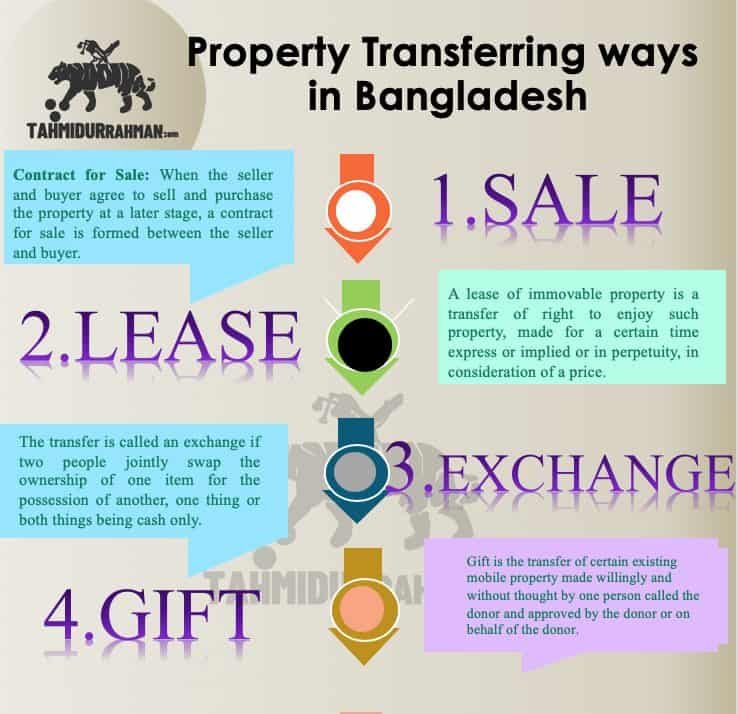
“The lease of immovable property is a transfer of the right to enjoy such property, made expressly or implied or in perpetuity for a certain period of time, in consideration of a price paid or promised, or in consideration of money, a share of crops, services or any other value.”
Under the present LAWS OF BANGLADESH, the deed by which the property will be transferred is required to be registered with the relevant Sub Registry Office. Non registered document has no legal value and the any party will not be able to enforce his/her right if the deed is not registered.
If the name of the transferor is not found in the latest Khatian or his/her name is not mutated, the Sub Registrar will refuse to register the transfer deed. Therefore it is mandatory to mutate the name of the transferor in the latest Khatian.
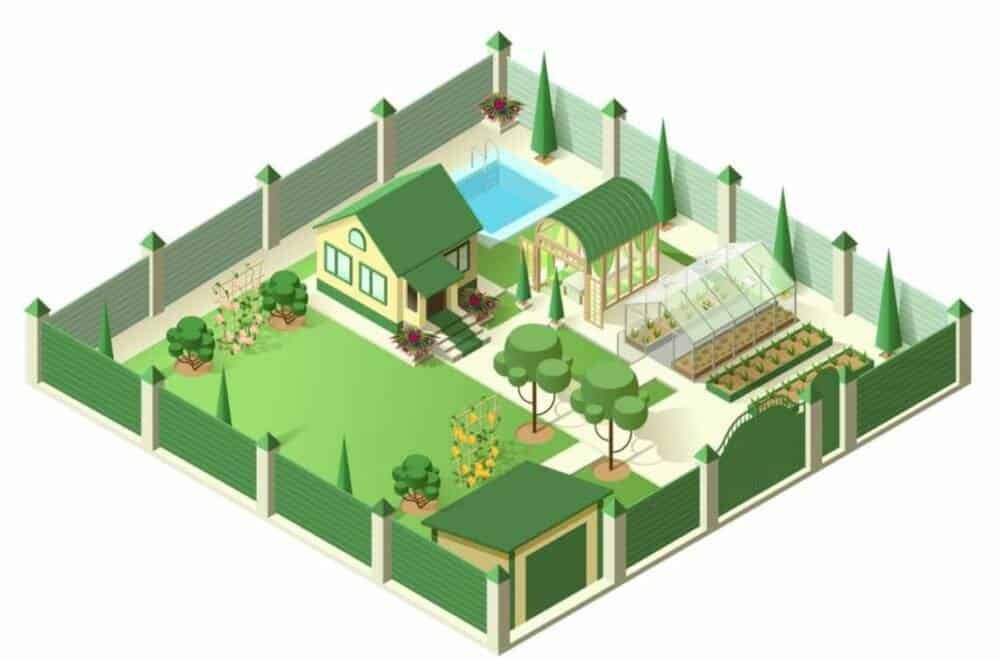
If you wish to know about the rquired steps to go through before buying any property in Bangladesh, go through the Article Below. This post deals with the questions like Why it’s important to verify the ownership of any property in Bangladesh? How to find the Ownership of a Land?
By choosing TRW Law Firm, clients can be confident that their land documents are in capable hands, backed by legal professionals who are dedicated to achieving the best possible outcomes.
GLOBAL OFFICES:
DHAKA: House 410, ROAD 29, Mohakhali DOHS
DUBAI: Rolex Building, L-12 Sheikh Zayed Road
LONDON: 1156, St Giles Avenue, 330 High Holborn, London, WC1V 7QH
Email Addresses:
INFO@TRFIRM.COM
INFO@TAHMIDUR.COM
INFO@TAHMIDURRAHMAN.COM
24/7 Contact Numbers, Even During Holidays:
+8801708000660
+8801847220062
+8801708080817

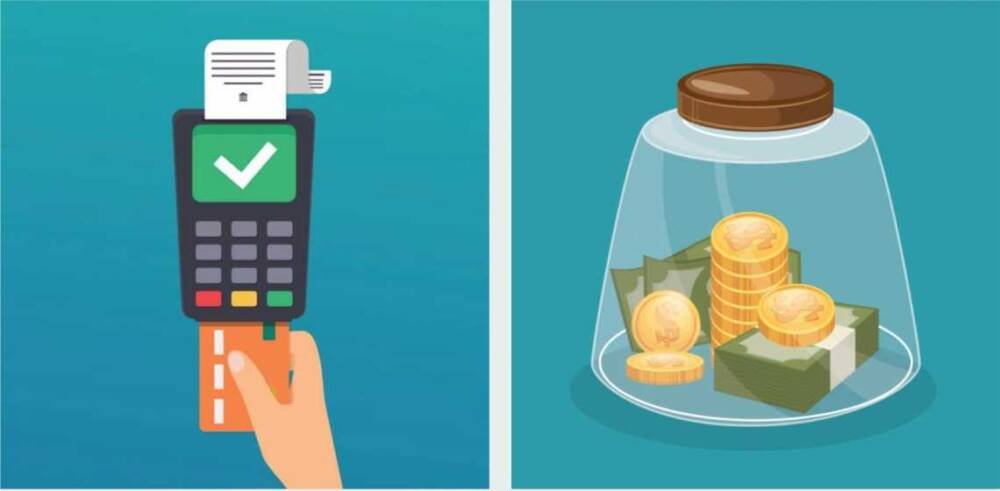


Tahmidur Rahman, Senior Associate
5 Aug 2019
What are the rules and Regulations of Microcredit & Financial Institutions in Bangladesh regarding incorporating and then managing a microcredit and microfinance institutions in Bangladesh? What are the regulatory compliances to maintain for an already established one? We explain everything in details in this post.
Before diving on to the rules and Regulations of Microcredit & Financial Institutions in Bangladesh, let’s recap the concept of microcredit and microfinance. Although the practice of lending small amounts of money for investment and consumption purposes has been popular in Bangladesh, modern structured, systemic, group-based and institutionalized micro-credit operations are Bangladeshi developments, pioneered by the Grameen Bank and replicated around the world with local modifications and adaptations. The system has experienced explosive growth here and elsewhere, and has given hope to millions of poor and lower middle class men & women and to generate income to get out of poverty. The Microfinance Management System has overcome the structural problems of targeting and providing financial services to millions of poor people.
The Societies Registration Act 1860, Companies Act 1994, Cooperative Societies Act 1984, Charitable and Religious Trust Act 1920 and Trust Act 1882 are the acts under which NGOs operating under microcredit programs may be registered. NGOs eligible to receive donations from different foreign sources must be registered with the NGO Office of International Contributions (Voluntary Activities) Regulation Ordinance 1978.
The MFIs was found to have transaction costs. Identifying and choosing target lenders and maintaining a high level of loan recovery are also expensive.
Before we deep dive into the details of Microcredit institutions in Bangladesh, if would like to know the rules for registration of a company in Bangladesh, visit the blog post below.
The continued “double-dip” slowdown in the investment markets is impacting Bangladesh’s economies. In addition, recent over-indebtedness problems in several countries have shown that there is over-supply of micro-credit. In this context, Bangladesh’s microfinance sector has shown great resilience and continues to contribute to the improvement of macroeconomic development. Bangladesh has achieved a remarkable achievement in financial inclusion in Asia. Approximately 81% of its adult population, including both the formal and microfinance markets, has been put under financial inclusion under the guidance of Micro regulation authorities, i.e MRA and Bangladesh Bank.
According to a recent World Bank survey, Bangladesh is second amongst the Asian countries to Sri Lanka in terms of financial inclusion indicators. The report shows that 40% of Bangladesh adult’s accounts are in formal financial institutions, which is 35% in India and 10% in Pakistan. MFIs in Bangladesh are already working with remittance channeling banks and mobile money transfer software. Bangladesh has also made good progress in terms of consumer rights and empowerment. The total savings has also increased by 23.25 percent to BDT 63.3 billion in June 2011 compared to previous year from 26.1 million clients, over 93 percent of them are women.
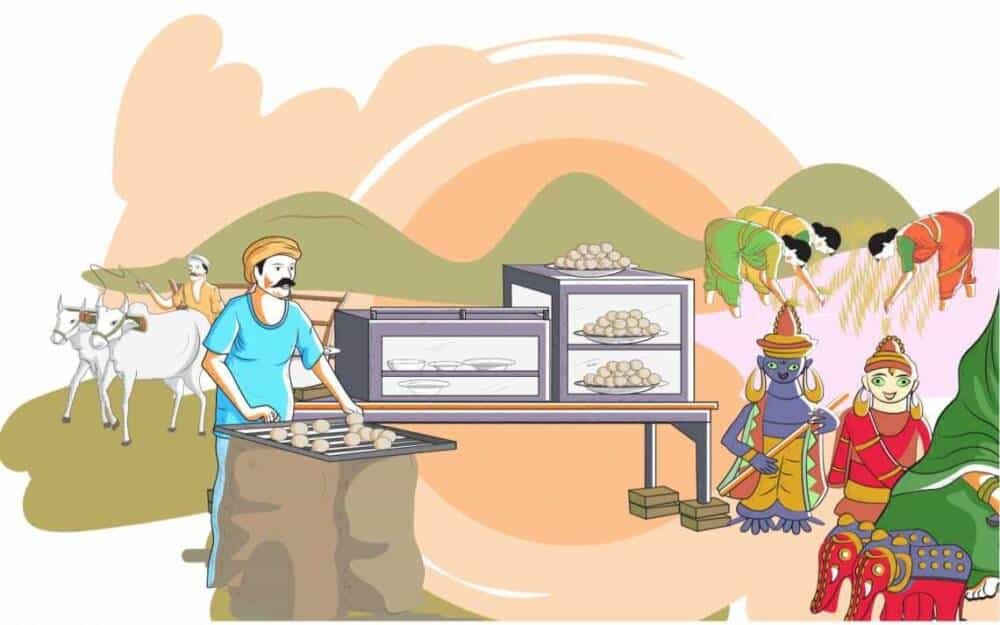
The Microcredit Regulatory Authority (MRA) was founded by the Government of the People’s Republic of Bangladesh under the Microcredit Regulatory Authority Act 2006 to promote and promote sustainable development of the microfinance sector by establishing an enabling environment for NGO-MFIs in Bangladesh. As the regulatory organ, MRA determines the rules and regulations of Microcredit & Financial Institutions in Bangladesh, i.e the NGO-MFIs. The Authority’s license is required to carry out microfinance operations in Bangladesh. MRA provides statistical information on the microfinance market on a regular basis. The NGO-MFIs provide operating data on the specified format twice a year and financial information on a yearly basis. The Government passed the Microcredit Regulatory Authority Act 2006 in July 2006 on the basis of suggestions made by the Committee. Under this Act, the Government established a separate Microcredit Regulatory Authority (MRA) and appointed its Board of Directors, chaired by the Governor of the Bank of Bangladesh. Under this new law, all operating MFIs will have to apply for a license from the Authority. No MFIs will be allowed to operate within the country without a license from the Authority. According to the legislation, all organizations that have a microcredit operation must separate their financial operations from other development works and keep their accounts separate.
The top three MFIs contribute 54% of the total outstanding loans as well as deposits of the microfinance sector in Bangladesh. Two of the largest MFIs, BRAC & ASA, each represent more than five million lenders. There are a few more of them evolving quickly. On the other hand, the smallest 428 NGO-MFIs contributed just 4 per cent of the total outstanding loan and 5 per cent of the total savings. The corporate dominance ratio is highly skewed in favor of large MFIs: only 22 companies hold 76% of the market share, while the three largest entities manage more than 50% of both the clients and the total financial portfolios.
On the other hand, Grameen Bank offers credit without collateral for a wide range of revenue generation and asset building activities. It also provides its members with housing loans. During the 2009-10 fiscal year, its cumulative microcredit disbursement amounted to Tk 91.9 billion, which was more than 28 per cent of the previous year. The number of its borrower members rose to 90,000, and 95% of them were women. It operates in over 45.000 villages. Several major micro-credit initiatives in Bangladesh that implement Grameen’s group-based approach include Brac, an NGO with more than 1 million members, and the Bangladesh Rural Development Board (BRDB), a government agency offering micro-credit to some 500,000 members.
|
License Issuing Procedure of MFI-NGO’s in Bangladesh
(1) In order to obtain a license, a person shall apply to the Authority in the prescribed form set out in the given form by MRA.
(2) Upon receipt of the request in the following form, the Authority shall evaluate the information provided with the request and, upon satisfaction, request the payment of the required license fee. (Follow the figure below).
(3) The Authority shall issue the license in the form set out in Annex B within 10 (ten) days of receipt by the applicant of the license fee referred to in sub-clause (2).
(4) If the application is denied, the Authority shall inform the applicant in writing within 30 (thirty) days of the rejection.
(a) The licensed entity shall abide by the law and all provisions of this Microcredit Authority Provisions 2010;
(b) the licensed organization shall not be able to operate its Microcredit Activities outside the area of operation approved by the Registration Authority;
(c) the full address of the Head Office and the Branch Offices of the company shall be notified to the Authority;
(d) any alteration in the area of operation permitted by the Registration Authority;
(e) any change of address of the Head Office shall be notified to the Authority in advance;
(f) changes to the address of the Head Office or Branch Office shall be notified to the Customers and to all other relevant parties;
(g) the licensed organization shall pay the annual fees mentioned in the table beforehand;
(h)The licensed organization must provide all information as required by the Authority and extend all co-operation in carrying out any inspection and investigation by the Authority.
“TRW is Considered as one of the leading firms in Investment Law in Dhaka, Bangladesh”
Models of Lending in Bangladesh
For all practical purposes, existing regulations of Microcredit & Financial Institutions in Bangladeshis is regulated by working out the presented by the Grameen Bank’s simple group-based approach. The basic structure is as follows: poor women and men are grouped into classes or groups that meet once a week to deposit a small amount of savings to build up their own resources. The Bank or MFIs lends a one-year loan (some MFIs repay loans within 43-46 weeks) which the lender repays in equal weekly instalments along with interest. Once the lender repays one loan, it is entitled to obtain another loan normally of a higher amount within the total loan limit, which, of course, is adjusted upwards over time.
The methodology was found to be so reliable and efficient that almost the entire industry adopted this method with minor adjustments to savings / credit policies such as savings and loan interest, savings withdrawal rules, etc. Today, almost 33 million women and men are working on this basic system every week. With time, however, both the Bank and other MFIs have modified their processes to deliver more than one form of savings and credit products, as the complexity of demand has changed and MFIs have also learned to deal with more complex situations.
A handful of non-governmental organizations have attempted and are still pursuing the so-called self-help group approach to creating a financial service delivery system. In this case, the organizer or NGO organizes self-help groups with the goal of promoting the mobilization of savings among disadvantaged women and men. If the participating members need a loan, they can borrow from their samity, i.e. their own savings funds. If the funds are not sufficient, the self-help Samities may seek to borrow additional capital from banks or the NGO. The second option was tried in Bangladesh, but the first alternative was not possible.
As the Regulations of Microcredit & Financial Institutions in Bangladesh are maintained by both the MRA and the Bangladsh Bank, the central issue in designing an individual system as opposed to a group-based system is to deliver flexible and demand-driven services to each client / borrower. The group-based system is seen as a’ one-size fits all’ system. The individual loan strategy, i.e. providing savings and credit services to each customer on the basis of the particular client’s request. Flexibility may occur in the form of the amount and frequency of the deposit of savings, the amount of the loan and the length of the loan, the repayment of the amount of the loan and the frequency of installments (no fixed schedule is considered flexible) etc.
Nevertheless, lending to individuals does not necessarily make it entirely’ flexible.’ For example, ASA and BRAC disburse loans to individual clients under their respective microenterprise loan programs but offer a fixed one-year loan and a fixed monthly repayment plan.
Although currently there’s no money lending MFI which is solely operating on FinTech-enabled payment processing and modelled their micro finance institutions according to that modern app based payment skeleton structure presented in other countries all around Asia, like Moneytap or koinworks. Implementing a credit based money lending through apps in bangladesh will play a huge role in modern era of lending credits. This will also reduce the amount of cash needed for printing and distributing currency notes. In addition, it will help mitigate the risks of counterfeit currencies circulating in the country. Reduced cash requirements would help the central bank reduce costs and manage risks.
Currently in Bangladesh, specialized financial institutions for processing transactions are generally referred to as payment banks. Payments banks are especially useful for people who do not have a bank account but engage in payment activities. FinTech allows these banks to keep their operating costs to a minimum. Payments banks are exploiting mobile telecommunications infrastructure and their large subscriber base to remove the barriers to entry. They compete with cash transactions to provide their customers with a simpler, faster and cheaper alternative. FinTech will help to achieve all of this for payment banks. With the right kind of guidance from regulators, the payment sector in Bangladesh could grow rapidly.
Informal money lenders are another typical source of micro-loans that follows’ individual loans.’ No up-to-date information and research on their activities is available. Nevertheless, it is assumed, on the basis of anecdotal evidence and small studies, that rural poor are no longer dependent on money lenders for small loans due to the proliferation of MFIs. We have the potential to borrow from one or more MFIs for investment or, in some cases, for consumption purposes. Nevertheless, due to the lack of a large-scale agricultural loan from MFIs, money lenders can still be found borrowing for emergency loans to the poor and also for agricultural loans.
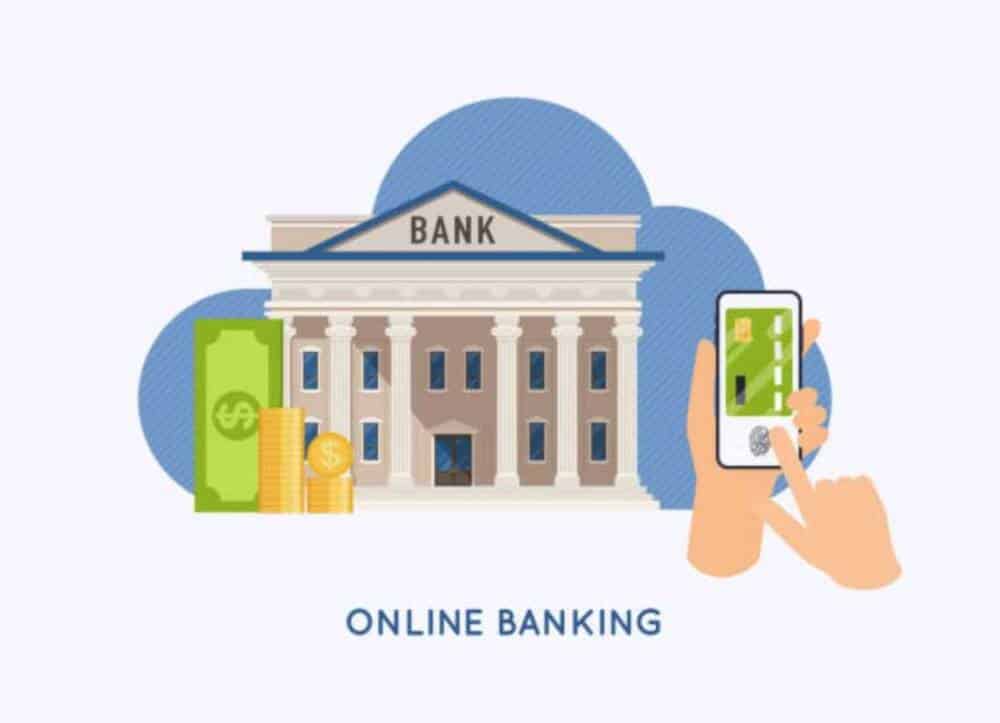
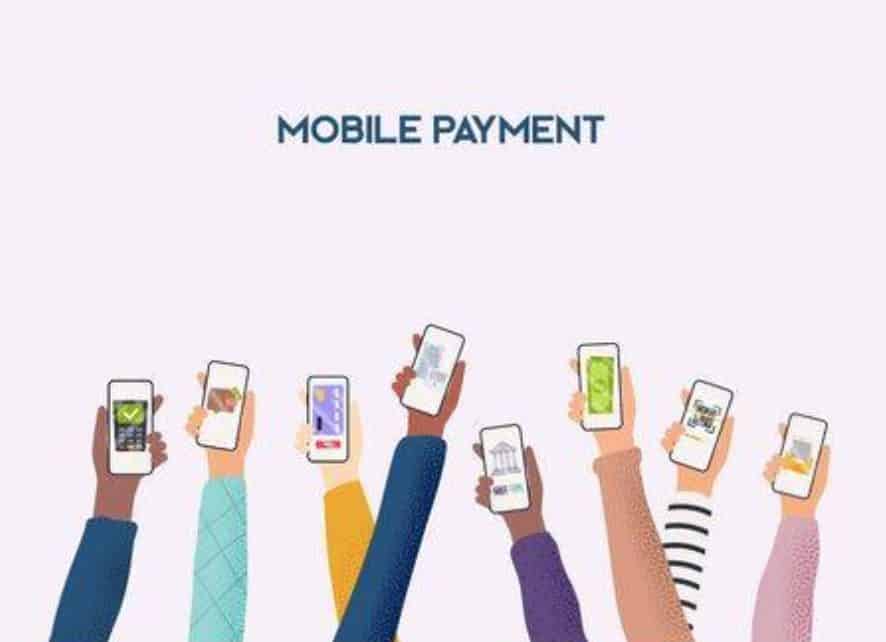
“Implementing a credit based money lending through apps in bangladesh will play a huge role in modern era of lending credits.”
The four key elements of the Digital Bangladesh Vision Government are the creation of human resources, the participation of women, civil services and, finally, the use of technology in businesses. Since the use of technology in industry is one of the key elements of “Virtual Bangladesh Vision,” MFS has made the most significant improvement over the years. However, only 47% of the population is still financed. Meaning that only 47% of the population has access to useful and affordable financial products and services that meet their needs–transactions, payments, savings, credit and insurance–delivered in a responsible and sustainable manner.
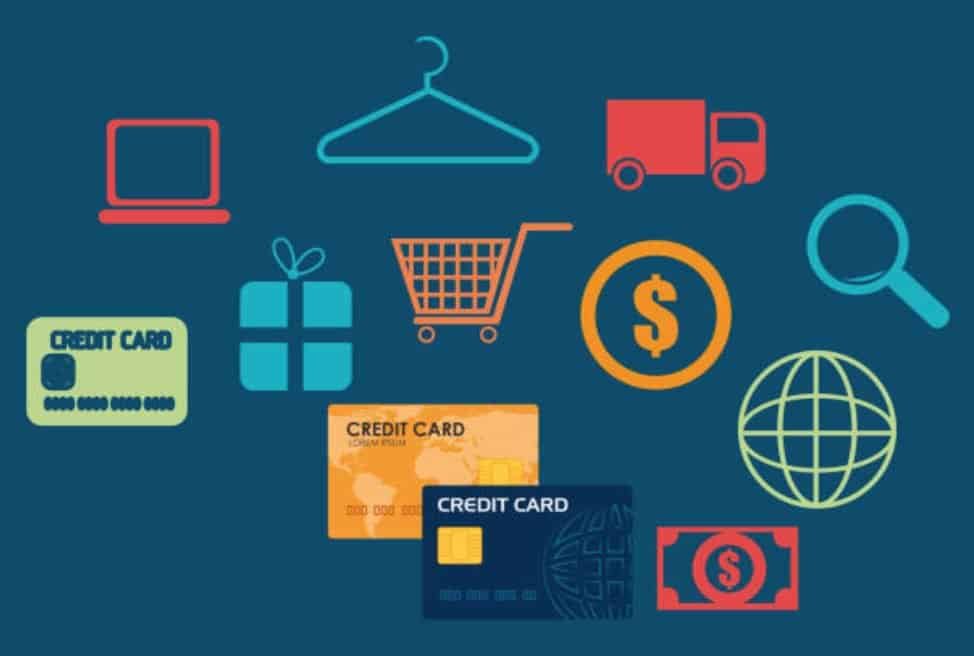
MFS still in its infancy has many downsides, for example: interoperability, limited service and withdrawal restriction among others. On the other hand, MFIs are currently facing competition from the finance and agent banking sectors. MFIs lack a comprehensive IT infrastructure that limits their ability to provide a variety of products and services to the financially excluded remote parts market. On the other hand, if we take a look at agent banking, we’ll see how both the collection of deposits and the disbursement of loans have grown. As of September 2018, the loan disbursement through the agent banking network amounted to BDT 150 crore, up 9.8% from a quarter earlier that year.
At the same time, the collection of deposits increased 28 per cent to BDT 2,577 crore, according to data from the central bank. As MFS and agent banking are more like an extension of traditional banks or in association with banks and mobile phone operators, they can easily remove customers from MFIs.
In fact, despite infancy in some cases, these MFS now even deliver savings to consumers, and they also have technical support. Nevertheless, social inclusion is not their main objective.
MFIs can use FinTech’s ability to address poverty in a pro-poor way by actively leveraging their large customer database.
Given all the benefits, the complete digitization of the microfinance sector will be strenuous as a number of challenges emerge.
First of all, the costs of developing virtual field applications are very high for MFIs. In a report published by UNCDF, one of the senior managers of a large MFI developed in Bangladesh suggested that hardware costs, for example: smartphone, tablets, would be too high for them.
One of the most difficult challenges for MFIs is to win customer trust. As most MFI clients are peasants, they lack financial and technical literacy. In fact, the TMSS Senior Manager stated that, if they ask their customers to apply for a loan.
The page you requested could not be found. Try refining your search, or use the navigation above to locate the post.

Taking a divorce in Bangladesh could have an effect on both partners if the correct procedures are not followed.The following post & Infographics will give you a thorough overview of divorce procedure in Bangladesh.
Marriages and Divorces (Registration) Act, 1974 oversees the procedure of divorce in Bangladesh. Divorce is the only valid way to end a relationship other than an act of God. The divorce PROCESS IS VERY STRAIGHTFORWARD IN BANGLADESH. The simple three steps are:
i) Giving written notice,
ii) Meeting the ARBITRATION TRIBUNAL,
iii) After the expiry of 90 days, taking the Registrar’s registration certificate.
Here in the following paragraphs we will explain the procedure of divorces amongst all communities and faith in Bangladesh.
Divorce is the legal dissolution of the material bond between the parties complying with the requirements of the law. Nevertheless, Islamic law means a distinction between the breakup of the marital relationship by the party filing for divorce. In general, Muslim law provides for two forms of divorce that include:
(i) Extra-judicial divorce and
(ii) Judicial divorce.
Extrajudicial divorce consists of three types,
(i) divorce by the spouse (talaaq, ila, zihar),
ii) by the wife (talaaq-e-tawfeez, lian) and
iii) through mutual consent (khula, muba’rat).
Simply ‘Talaaq’ is a divorce by the husband. If the husband pronounces talaaq once during a tuhr that leads to abstinence from sexual intercourse in order to complete the iddat duration, the talaaq will become SUCCESSFUL. The tuhr period is the interval between menstruations.
Talaaq-e-Tawfeez is a divorce procedure in which the wife may, on her own behalf, renounce her marriage in accordance with the delegation provided by her husband. Now, this is a bit complicated, as the provision of this talaaq has to be drawn up in the niqahnama under section 18 with the permission of the husband.
Here both husband and wife through their mutual perticiaption aims for a seperation. It’s also termed as Mubarat. Mubarat is also one kind of dissolution of marriage where both of the parties want mutual separation and the aversion is mutual.
“Under traditional Islamic law a bare talaq divorce is deemed to have taken place when the husband pronounces three times “I divorce thee”. This pronouncement dissolves the marriage instantly.”
“Men may seek divorce by
(i)pronouncing talaq and then
(ii) giving written notice to the chairman of the union parishad or other appointed official and
(iii)a copy to his wife.
(iv)the chairman is then bound to constitute an arbitration council charged with the task of attempting reconciliation between the parties.
(v) if such efforts fail, divorce is generally effective after ‘iddat’ – a three month period that must pass before the divorce becomes effective – or, if the wife is pregnant at the time of talaq, at the end of her pregnancy, whichever occurs later.”
Steps towards dissolution of Hindu marriage:
➤ Petition to file for divorce –
First of all, a joint petition for dissolution of marriage for a decree of divorce is to be presented to the family court by both husband and wife on the ground stating that they have not been able to live together and have mutually agreed to dissolve the marriage or they have been living separately for a period of one year or more.
This petition will, then, be signed by both the parties.
➤ Appearing before Court and inspection of the petition-
After that, both the parties will have to stand before the family court after the filing of the petition. The parties would present their respective The legal Source/lawyers
The court would gradually observe the petition along with all the documents presented in the court by the The legal Source of both parties individually.
The court may even attempt to bring reconciliation between husband and wife; however, if this is not possible, the matter proceeds for further follow-ups.
➤ Passing orders for a recording of statements on oath-
Eventually, the petition is examined by the court and it satisfies, court may order the party’s statements to be recorded on oath.
The first motion shall be passed and a period of 6 months shall be given before the second motion Then, once the declarations have been made, a decision on the first motion shall be given by the court. After that, all parties will be GRANTED A SIX-MONTH PERIOD OF DIVORCE BEFORE THEY CAN FILE a second petition. The maximum time period for filing a second request is 18 months from the date of submission of the divorce application to the Family Court.
Second motion and final hearing of the petition Once the parties have decided to proceed further with the proceedings and to appear on the second motion, they can proceed with the final hearing. It includes the presentation of the parties and the recording of the comments before the Family Court.Recently, the Supreme Court has held that the 6 months period given to the parties can be waived off at the decision of the court.
Therefore, the parties who have genuinely settled their differences including alimony, custody of the child or any other pending issues between the parties, this six months it can be waived off. Even if the court is of the opinion that the waiting period will only extend their sufferings, the six months can be waived off in this case also.
In the case of a joint divorce, the two parties must have given their consent and there must be no discrepancies in the issues relating to the estate, custody of the child, care, property, etc. There must therefore be a complete AGREEMENT between the parties on the final decision on the dissolution of the union.
If, after hearing the parties, the court is satisfied that the claims in the petition are valid and that there can be no hope of reconciliation and cohabitation, it may pass a divorce decree ordering the marriage to be dissolved.
The divorce comes to an end once the divorce order has been signed by the judge.
(1) A Nikah Registrar may register a divorce effected under Muslim Law within his jurisdiction on application being made to him for such registration.
(2) An application for registration of a divorce shall be made orally by the person or persons who has or have effected the divorce:
Provided that if the woman be a parda-nashin, such application may be made by her duly authorised vakil.
(3) The Nikah Registrar shall not register a divorce of the kind known as Talaq-i-tafweez except on the production of a document registered under the REGISTRATION ACT, 1908 (XVI of 1908), by which the husband delegated the power of divorce to the wife or of an attested copy of an entry in the register of marriages showing that such delegation has been made.
(4) Where the Nikah Registrar refuses to register a divorce, the person or persons who applied for such registration may, within thirty days of such refusal, prefer an appeal to the Registrar and the order passed by the Registrar on such appeal shall be final.
Divorce in Christian marriage can not be induced by a declaration of divorce by either side or by mutual agreement, except by a court order. The provisions for the dissolution of Christian marriage by order of the court was included in the Divorce Act of 1869. Under the provisions of this Act, any husband may make a PETITION TO THE DISTRICT JUDGE’S COURT OR TO THE SUPREME COURT OF BANGLADESH for the dissolution of his marriage on the ground that his wife is guilty of adultery. Likewise, any woman can make such a petition to either court for the dissolution of her marriage on any of the following grounds:
(i)I that the husband, after marriage, has converted to any religion other than Christianity and has married another woman;
(ii) that the husband is guilty of incestuous adultery;
(iii) that the husband is guilty of adultery with bigamy;
(iv) that the husband is guilty of marriage with another woman and adultery;
(v) that the husband is guilty of rape, sodomy or bestiality;
(vi) that the husband is guilty of adultery;
(vii) that the husband was guilty of adultery combined with desertion for two years or more without a reasonable excuse.
If the court is satisfied on the basis of evidence of the alleged ground and is satisfied that the complaint is not collusive or that there is no connivance or condonation of the alleged act of adultery, an order for dissolution of the marriage is issued.
A district judge can, subject to approval by the High Court Division, issue a decree for the dissolution of marriage nisi. The Board of Three Judges of the High Court Division may, by majority opinion, approve such a decision after hearing or further examination or taking further evidence.
Following the dismissal by the district judge of the petition for dissolution of the marriage, the petitioner may submit a similar petition to the High Court Division. The three judges of the High Court Division may also, by majority opinion, issue an order for the dissolution of marriage on a petition filed before the High Court Division. Either of the above two courts may also issue an order for the nullity of marriage on any of the following grounds:
(i) that one of the parties was powerless;
(ii) that the parties are within the forbidden degree of consanguinity or affinity;
(iii) that either party is insane at the time of marriage;
(iv) that the former husband or wife of either party existed at the time of marriage, and that marriage was then in effect.
Once, the husband or wife can, without a reasonable excuse, seek a judicial separation order from either court on the grounds of adultery, abuse or desertion for two years or more. Such an order for judicial separation may be overturned by the court on the basis that it was imposed in its absence and that there was a reasonable excuse for the suspected desertion. The court may also issue an order to protect the estate of a deserted woman.
Likewise, an order for the restoration of conjugal rights may also be issued if either the husband or the wife has withdrawn from the other’s business without a reasonable excuse.
Tahmidur Rahman Remura Wahid LAW FIRM IN BANGLADESH provides legal advice on marriage and divorce:
TRW’s Barristers, Advocates, and Lawyers in Mohakhali DOHS, Dhaka, Bangladesh have extensive experience dealing with marriage, divorce, and alimony. It has experience consulting and assisting numerous international clients with utmost care and attention throughout their legal troubles, in addition to handling various issues related to marriage and divorce among domestic clients on a regular basis.
Please contact us at:
E-mail: INFO@TAHMIDUR.COM
or INFO@TRFIRM.COM
Phone: +8801847220062 | +8801779127165
Address: House 410, Road 29, Mohakhali DOHS, Dhaka.
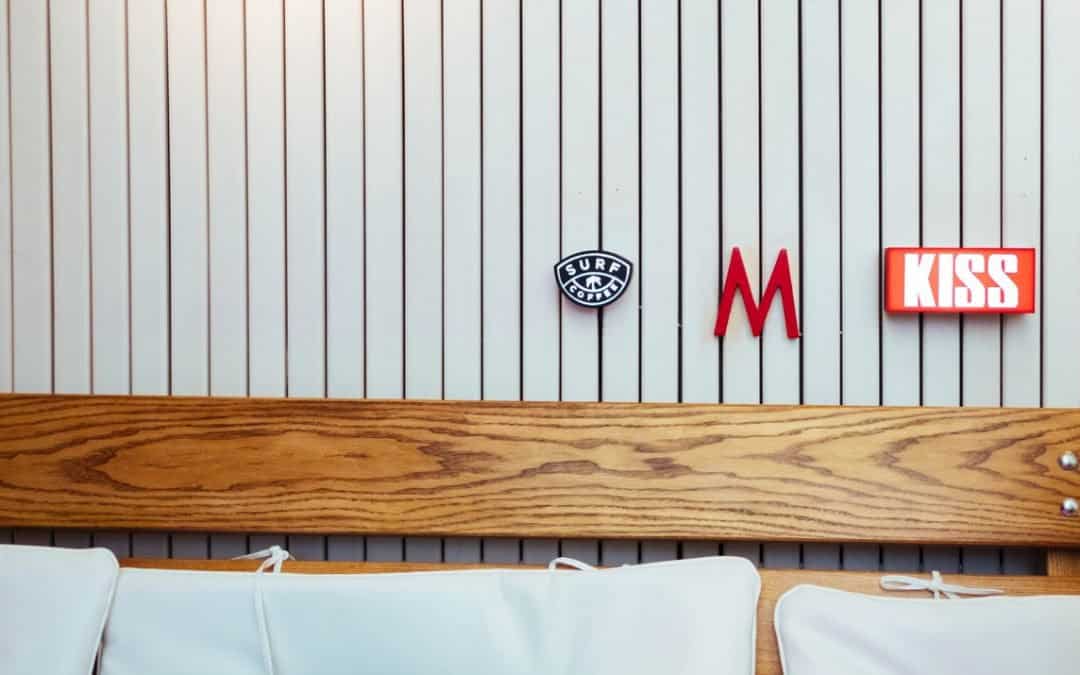

Tahmidur Rahman, Senior Associate, TR Barristers in Bangladesh
Posted on 4th July 2019, Updated September 2020
This post will explain in details about Trademark Registration in Bangladesh | The complete procedure, how to apply, cost and filling requirement in 2020. | Everything about Trademark registraion and filing in Bangladesh that you need to know and be aware of.
Find the subsections below, If you want to jump through specific sections instead of reading the whole article.
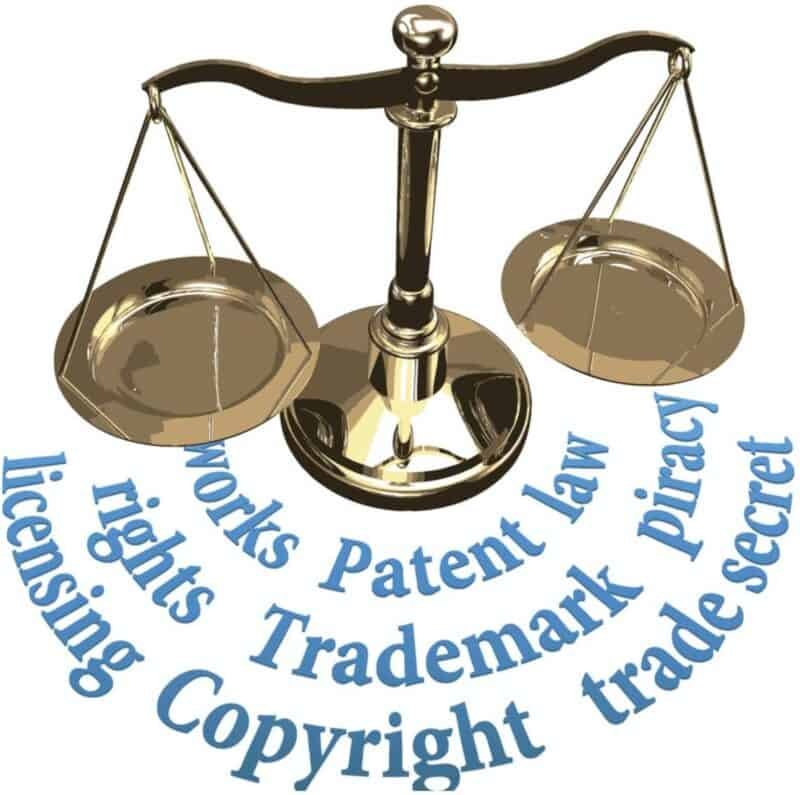
Usually, a trademark is a name, term, sentence, logo, emblem, style, illustration, or a combination of these elements. There are also a variety of non-conventional trademarks composed of trademarks, such as those based on colour, scent or sound, that do not fit within these traditional categories.
In order to prevent the unauthorized use of that trademark, the owner of a registered trademark may initiate legal proceedings for trademark infringement.
Trademark Registration in Bangladesh, however, should not be deemed as absolutely necessary. A common law trademark owner can also file a lawsuit, but an unregistered trademark can only be protected in the geographical area for which it has been used or in the geographical areas to which it may fairly be assumed to extend.
The term trademark is also used informally to refer to any distinguishing attribute, such as the well-known features of celebrities, by which an individual is easily identified. If a trademark is used for services rather than goods, it may also be referred to as a service mark.
A trademark is a distinctive symbol or indicator used by a person, a commercial company or some other legal body to assist customers in the recognition of the origin of their goods or services for which the trademark occurs and to differentiate their goods or services from those of other individuals.
Now we will dive deep down on the trademark registration in Bangladesh, the filing process, the fees and the costs involved.

In Bangladesh, a trademark application can be filed in the manner prescribed for a single class only with the Registrar of Trademarks and with an application number. In Bangladesh, multi-class patent applications can not be submitted. Application for a Trademark registration in Bangladesh or Preference Trademark A submission from a convention country requesting preference can also be lodged in Bangladesh within 6 months of the priority date.

4. Goods / Services specification and class
5. Day of use of the symbol in Bangladesh (whether the symbol is in use or suggested in Bangladesh to be used).
6. POA (No original or notarization or legalization needed, only sufficient SCANNED copy)
7. Fee Prescribed
In Bangladesh, there is a provision for priority requests. In that regard, within 6 months of the date of that earlier filing, the claimant for registration of a trade mark seeking to take advantage of the priority of an earlier application lodged in a convention country shall add to his application a written statement stating the date and number of the earlier application.
If the priority document is in some language other than English, the English version of the priority document should also verified / notarized for a swift trademark registration in Bangladesh.
Anyone can file claiming priority or ordinary application
Once the claim has been filed, the Registrar shall evaluate the distinctiveness, identification or resemblance of the trade mark with existing registered trade marks and the general accordance with the provisions of the Statute of the Registrar.
If the examiner is pleased as above (at the examination stage), the label will be released for opposition purposes in the Trademarks Journal.
Where no opposition is received or resolved the same in favour of the Applicant, the Registrar issue a Certificate of Registration for an initial period of seven (7) years from the date of filing.
Trademark Registration Procedure in Bangladesh is regulated by Trade Marks Act, 2009 and Trade Marks Rules, 1963. However, any individual claiming to be the owner of a trademark needs to apply to register the trademark in Bangladesh.
For trademark registration in Bangladesh, the search may be conduceted for both word and device marks. In order to assess the availability of trademarks, the presence of prior identical / similar marks on the register, etc., it is advisable to perform a trademark check before filing a trademark application in order to prevent any objection or opposition with regard to the mark.
While a search is not necessary for the filing of an application, it is advisable, before filing an application, to conduct a preliminary search for the proposed trade mark in order to prevent any objection and opposition to the trade mark at a later date.
Trademark searches in Bangladesh can be performed for word marks, numerals, labels and system marks. Device mark searches can be carried out using the Vienna code.
Trademark searches can be categorized in the following categories:
(a) Search through Word Mark
b) Search through Device mark
Trademark word search version of Bangladesh follows the Nice Classification and trademark applications can be filed for products in Classes 1-34 and services in Classes 35-45. Trademark searches in Bangladesh can be performed for the desired class and related classes.
It is advisable to conduct a thorough search for trade mark clearance in Bangladesh in order to ascertain the availability of the proposed trade mark and also to address any resistance and opposition to the trade mark at a later date.
In addition to looking for trademarks, it is also advisable to search the proposed trademark in Bangladesh for a detailed company search and domain search.
It is advisable to perform a systematic search for a figurative trademark. Device marks shall include individual marks such as stylized letters, numerals, shapes, plants, celestial beings, living creatures, etc. or a mixture of marks containing device marks.
The hunt for a system mark in Bangladesh can be carried out between the marks filed and registered in accordance with the Vienna Code Classification.
Applications for trademarks in Bangladesh can be filed in two categories:
Ordinary trademark applications filed in Bangladesh are non-priority applications. A trademark application is typically filed on the form TM-1. Applications for multi-class trademarks can not be filed in Bangladesh.
However, the Trademarks Act also lays down provisions concerning the filing of priority applications where the priority of the trade mark can be asserted in the said trade mark filed in the Convention country.
Trademark Applications (Priority Trademark Applications)
A priority trade mark application should be filed in Bangladesh within 6 months of the date on which the application was made in the Convention country. A certified copy of the priority documents must be filed within 3 months of the date of the submission for the Convention in Bangladesh.
The Paris Convention for the Protection of Industrial Property, signed in Paris , France, on 20 March 1883, created the Union for the Protection of Industrial Property. It provides national treatment to the applicant residing in the Member State of the Union, national treatment is a very important concept and is necessary for the achievement of the fundamental objective of the Paris Convention for trademark registration in Bangladesh.
The idea is to ensure fair treatment of applications from Member States in the Member State concerned and not to discriminate between nationals of Member States for grant purposes and protection of industrial property.
Priority applications may be lodged in Bangladesh within six months of the date on which the request was made in the countries of the Convention. The trade mark, if licensed under the Act , shall be licensed as from the date on which the application was made in the Convention country and shall be considered to be the date of registration for the purposes of the Act.
In Bangladesh, a trade mark application can be filed in 45 classes: Classes 1 to 34 for goods and Classes 35 to 45 for service marks.
The Trademarks Rules of 1963 were published in the exercise of the powers conferred by section 84 of the Trademarks Act of 1940 and the Rules of Procedure came into force on 2 April 2004.
The Trademarks Act, 2009 has been amended and the Trademarks Register Wing, Bangladesh empty Notification S. R. O. No.211—Law/2008 dated 30 June 2008 has been notified by expanding the classification of products and services to 1 to 45. Service mark applications are also now being lodged and prosecuted in additional service grades, i.e. 43 to 45.
An application for registration of a trade mark must be filed with the Department of Patents, Designs and Trademarks (DPDT), Dhaka, in the specified form, with payment of the necessary fees.
Further information on the filing of trademark applications can be found on the Trademark Registry website, Bangladesh, under the following link: http:/www.dpdt.gov.bd/
Any individual who claims to be the owner of a trade mark can make an application for registration of the trade mark in respect of his goods / services. It should be filed with the trademark office, Dhaka.
After filing a trade mark application, the same shall be reviewed by the Trade Marks Registry, Dhaka, as to its inherent registrability and/or any similarities with existing marks. If an objection is raised, an official investigation report will be released by the Trademarks Registry.
If a trade mark is registered in Bangladesh, it shall be valid for a period of 7 years from the date of registration. The registration of a trade mark could then be extended for a further period of 10 years from the date of expiry of the registration or the last renewal of the registration.
As we have explained earlier:
Trademark application in Bangladesh can be filed for a single class only. Applications for multi-class trademarks can not be filed in Bangladesh. Application for a trade mark or a priority trade mark Applications requesting priority from a convention country can also be filed in Bangladesh within 6 months of the priority date.
Official Review of a Trademark in Bangladesh / Issue of Office Action – Once an application has been filed, the Registrar shall investigate the distinctiveness, the potential for misleading and contradictory trademarks.
If an objection to registration is raised, the Registrar shall submit an official review report within 6 months to 1 year, depending on the backlog of the registry.
The Registrar can, subject to the provisions of the Ordinance, approve or deny an application. A trade mark application in Bangladesh may be refused / objected by the Registrar on the following grounds:
However, the above categories of trade marks may be registered if the owner of the earlier trade mark has consented to it or if there has been an honest parallel use of the later trade mark.
As we have explained earlier:
(a) consisting of, or consisting of, some scandalous or pornographic matter;
(b) the use of which will, for the time being, be contrary to any law; or
(c) the use of which is likely to be misleading or confusing; or
(d) which contains any matter likely to affect the religious sensitivities of any class of Bangladeshi citizens;
(e) which is identical with, or imitates, or contains as an element, the armorial bearing, flag or other emblem, the name or abbreviation or initials of the name or official sign or symbol adopted by any State or international organization founded by an international convention, charter or other instrument, unless approved by the competent authority of that State or organization;
(f) which would otherwise be dissented from defense in a court of law;
(g) the request is made in bad intentions and in bad faith;
Furthermore, the objections raised by the Registrar with respect to the application are forwarded to the applicant and, within 90 days, the applicant must file an acceptable reply with the supporting documents to the official objections. The Registrar may consider the request on the basis of the reply and the documents submitted or may list the request for a hearing.
In trademark registration in Bangladesh, an appeal against the decision of the Registrar at or without the hearing can be lodged by the applicant within 1 month from the date of such notification to the Registrar, requiring him to state in writing the grounds and the materials used by the Registrar in arriving at his decision.
When an application for registration of a trade mark is approved, the Registrar shall publish it in the Official Trade Marks Journal and shall make it available on the Registry ‘s website.
After review and approval of the reply by the Registrar, the application is ordered for publication / publication in the Trademarks Journal. An application is published in the Trademarks Journal in order to allow the public to file an objection to the registration of a trade mark.
Upon publication of the trade mark in the Trademarks Journal, any person may object to the registration of the said trade mark by filing a notice of opposition within a specified period of 2 months from the date on which the Trademarks Journal is made available to the public.
The time limit for filing a notice of opposition can be extended by a maximum duration of 3 months upon filing a stated request for an extension of time of three months for a period of one month each along with the prescribed fee.
The application shall continue to be registered if there is no opposition or if the opposition has been submitted and it has been determined in favor of the applicant. The mark shall then be registered for a period of 7 years from the date of filing of the application and the certificate of registration shall be issued.
The trade mark may be extended from time to time for an indefinite period by payment of renewal fees, failing which the trade mark may be withdrawn from the Register on account of non-renewal. Each renewal period shall be for a period of 10 years.
Upon publication of a trade mark in the Trademarks Journal, any person may file an opposition against registration of the said trade mark in Bangladesh by filing a notice of opposition within a specified period of 2 months from the date on which the Trademarks Journal is made available to the public.
The time limit for filing a notice of opposition can be extended by a maximum duration of 3 months upon filing a stated request for an extension of time of three months, each with the prescribed fee.
The trademark application can be challenged in Bangladesh on the grounds set out in Sections 8 , 9 and 10 of the Trademarks Act 2009.
Where an opposition is lodged against a trade mark in Bangladesh, a copy of the notice of opposition so lodged shall be served on the applicant by the Trade Marks Registry and the applicant shall be allowed to file a counter-statement within 2 months of receipt of the notice sent by the Registry, failing which the application shall be regarded as abandoned.
Subsequently, the Registrar shall request written documentation from all parties. If the dispute is not settled by the parties, the hearing shall be determined on the matter.
The Registrar shall decide the case in the opposition proceedings. In the absence of an opposition, a trade mark shall be registered and a certificate of registration shall be issued.
A trade mark may be renewed in Bangladesh from time to time for an indefinite duration upon payment of renewal fees, failing which the trade mark may be withdrawn from the Register on account of non-renewal. Each renewal period shall be for a period of 10 years.
The process for filing a renewal of a trademark in Bangladesh is as follows: a request for renewal of a trademark in Bangladesh can be filed within 6 months prior to the date of registration / renewal if it is accompanied by the necessary renewal fees in the specified form.
Requests for renewal of a trade mark in Bangladesh can be filed within 6 months after the date of registration / renewal, provided they are accompanied by the required renewal fees on the prescribed form.
If, on grounds of non-renewal, a trade mark has been withdrawn from the Register, the same may be reinstated by filing an application in the specified form for the restoration of the trade mark within 1 year from the expiration of the last registration of the trade mark.
Applications for trademarks in Bangladesh can be filed in two categories:
(1) Ordinary applications
(2)Convention Application (claiming priority from the country of the Convention)
Ordinary trademark applications filed in Bangladesh are non-priority applications. A trademark application is typically filed on the form TM-1. Applications for multi-class trademarks can not be filed in Bangladesh. However, the Trademarks Act also lays down provisions concerning the filing of priority applications where the priority of the trade mark can be asserted in the said trade mark filed in the Convention country. – Trademark Registration in Bangladesh
A priority trade mark application / convention application for a trade mark should be filed in Bangladesh within 6 months of the date on which the application was made in the Convention country. A certified copy of the priority documents must be filed within 3 months of the date of the submission for the Convention in Bangladesh.- Trademark Registration in Bangladesh
The Paris Convention for the Protection of Industrial Property, signed in Paris , France, on 20 March 1883, created the Union for the Protection of Industrial Property. It gives national care to the applicant residing in the member country of the union, in other words. National care is a very important concept and is necessary for effectively achieving the fundamental goal of the Paris Convention.
The idea is to ensure fair treatment of applications from Member States in the Member State concerned and not to discriminate between nationals of Member States for grant purposes and protection of industrial property. Priority applications may be lodged in Bangladesh within six months of the date on which the request was made in the countries of the Convention. -Trademark Registration in Bangladesh
“Tahmidur Rahman Remura Wahid Parnters is Considered as one of the leading firms in Intellectual Property Law in Dhaka, Bangladesh”
Carpe Noctem Bangladesh
An application has to be submit along with few information and documents which are listed below:
The government fee for filing the application for registration is 3500 (three thousand and five hundred taka) or equivalent to USD. 42 (Forty Two). You can get more information on government fee for registration here.
The application needs to file at the Head office or any branch of the Trademark Registry having territorial jurisdiction over the principal place of business.
Furthermore, If the person does not carry on business in Bangladesh, the application needs to file in the office having territorial jurisdiction over the place mentioned in the address for service in Bangladesh.
Upon receiving the application along with government fee, the Registrar will issue an automatic generated receipt. The receipt includes information related to trademark filing, e.g. Application Number, application date, trademark, etc.
After the application has been filed, the Registrar shall review the distinctiveness, the risk of fraud and the conflicting trademarks. If an objection to registration is raised, the Registrar shall submit an official review report within 6 months to 1 year, depending on the backlog of the registry.
The Registrar can, subject to the provisions of the Ordinance, approve or deny an application.
After an application has been filed, the Registrar shall review the trademark for its distinctiveness, identicalness or resemblance to existing registered trademarks and general compliance with the provisions of the Statute.
If the Registrar is pleased, he shall issue a letter of approval for the trade mark to be published in the Trademarks Journal for opposition purposes (smooth case). Otherwise, the Registry raised the objection / refusal notice (OFFICE ACTION) and demanded a written reply on the objection or refusal notice (non-smooth case).
The Official fee of the publication cost would be around VAT: BDT 1150 or USD 20 + Law Firms fee and the timeline would be 8 to 12 months from the date of the publication fee deposited.
Thereafter, if anyone has any dispute as to the proposed trademark, he can raise it within 2 (two) months from the date of publication.
The reason behind the journal publication is to invite the public for filing opposition against the registration of a mark.
If there is no office action or notice after review, if the Examiner is satisfied as mentioned above (in stage 2), the Registrar shall approve the trade mark for advertising in the Trademarks Journal for opposition purposes.
If there is no office action or note After review, if the Examiner is satisfied as mentioned above (in stage 2), the Registrar shall approve the trade mark for advertising in the Trademarks Journal for opposition purposes.
The Registrar having received the notice of Opposition, sends a copy of the Notice of Opposition to the Applicant. Thereafter, the Applicant will get an opportunity file a Counter-Statement with in 2 (two) months of receiving the notice.
The Counter-Statement should contain the grounds in supporting the claim. The government fee for filing counter-statement is 1500 (one thousand and five hundred taka).
Upon receipt of the Counter-Statement, the Registrar shall forward a copy to the Opponent. The Registrar shall then rule on the contested matter at the hearing of both parties.
However, an appeal can be brought before the High Court against the decision of the Registrar. However, the opposition proceedings should be filed within 120 (one hundred and twenty) working days of receipt of the order.
Above, if there is no conflict against the publication of a trade mark, the Registrar shall, after the expiry of the term of 2 ( two) months, notify the Registrar of the payment of the charge.
After collecting the fee, the Registrar shall issue a Certificate of Registration for the trade mark. The licensed trade mark shall be valid for a term of 7 years from the date of registration for trademark registration in Bangladesh
A Trademark can be renewed in Bangladesh from time to time for an indefinite duration upon payment of renewal fees. Failure to renew could, however, result in the removal from the Registry of registered trademarks. The renewal period could be for a period of 10 years.
Please bear in mind that an application for the renewal of a trade mark should be made no more than six (6) months before the expiry of the last renewal.
The registration timeline would be 6 to 8 months from the date of publication if there is no opposition and the cost would be with an offical fee with VAT+Disbrusment: BDT 17250 or USD 220 +Law Firm’s fee.
TR Barristers in Bangladesh offers services on Trademark Registration and other related matters. However, If you need any legal help or clarification about Trademark Registration Process in Bangladesh, please reach us at:
E-mail:info@trfirm.com
Phone:+8801847220062 or +8801779127165 (WhatsApp). Address: Road 126 (3rd Floor) Islam Mansion, Gulshan-1, Dhaka.